- BY ISSIMO
- February 8, 2023
Italy’s Weirdest Festivals
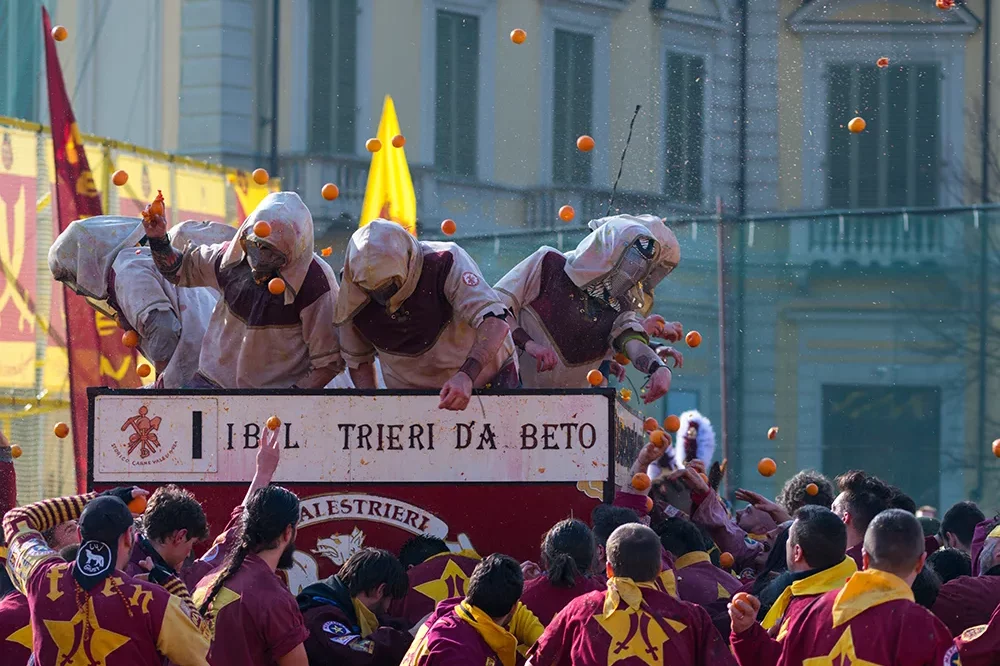
Take note of these weird and wonderful festivals from the boot-shaped country
Italy is the queen of festivals. From Veneto to Sardinia, the country brims with regional celebrations, sagre and local events that weave together patron saints and tantalising delicacies, centuries-old traditions and superstitious beliefs.
Some of these festivals are well-known everywhere – think of the Venice Carnival, the Festival of Sant’Agata in Catania, or the Palio di Siena in Tuscany. Others are a little more niche, yet still very much worth travelling to for their wonderful weirdness and uniqueness.
It’s on them we’re turning the spotlight today. From citrus-themed bonanzas to candle-led relays, here are five festivals to see in Italy at least once in your lifetime.
La Battaglia delle Arance, Ivrea, Piedmont
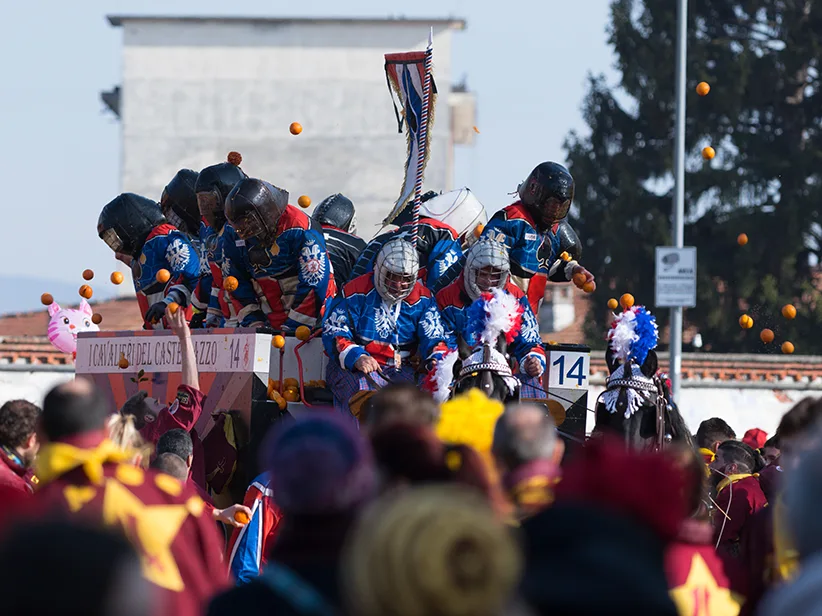
Taking place in the Northern Italian town of Ivrea on the Sunday before the beginning of the Catholic Lent season, the Battaglia delle Arance (the Battle of the Oranges) is a reenactment of a 12th century fight between the Ivrean people and the tyrannical government they were under at the time, commemorated by – you guessed it – throwing oranges at one another.
The holiday serves as a symbol of the city’s resilient spirit and its victory in attaining freedom and sees participants – divided into nine teams – either run through the streets on foot or throw oranges from carts that roam around Ivrea, shield by leather helmets.
Prizes are awarded on a final ceremony on Shrove Tuesday to the teams that have most excelled in terms of ardour, technique and loyalty. Sounds bizarre, and it is, but if you’re into citrus fruits and want to witness one of Italy’s biggest food fights, this is the festival for you.
WHEN: From 16 th to 21th February
La Corsa dei Ceri, Gubbio, Umbria
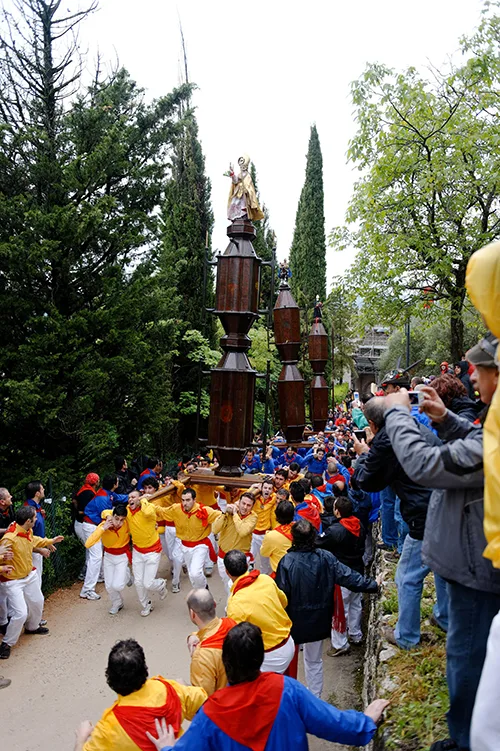
The hillside town of Gubbio in Umbria swells to capacity every year on May 15 for the Corsa dei Ceri (the Race of the Candles), a procession that sees locals carry giant candles to commemorate three different saints: Saint Ubaldo, the town’s patron; Saint Anthony, the protector of farmer; and Saint George, the protector of merchants. Parties of people wearing different colours for each saint – yellow (Saint Ubaldo), blue (Saint Anthony) or black (Saint George) – first parade around the mediaeval village holding candles that are five metres tall, then race through its slopes and winding alleys, though the Saint Ubaldo team always wins.
The origins of the celebration are difficult to pinpoint – some say it was established to commemorate a victory of Gubbio, while others believe it started to honour the goddess Ceres. Either way, records show la Corsa dei Ceri was already being held in the 1100s, making this one of Italy’s oldest festivals.
WHEN: May 1st
Festival dei Serpari, Cocullo, Abruzzo

Annually, local snake catchers and charmers – or serpari – in Cocullo, a tiny mediaeval town in Abruzzo, compete to catch four types of harmless snakes, before handing them out to worshippers, who then place them gently on a wooden statue of San Domenico, their patron saint. The statue is later carried through the streets of the village, held up high in the centre of a long procession, as part of a centuries-old tradition that honours the saint’s 11th century miracle of removing snakes from farmers’ fields. It might all sound rather odd and way too slimy, but the festival is a big deal for the borgo – and believed to have roots in ancient Roman times as a celebration of Angitia, a Roman goddess of snakes who was revered in central Italy.
As for the reptiles, worry not: they are released back into the wild at the end of the festivities.
WHEN: May
Il Maggio di San Giuliano, Accettura, Basilicata
Accettura, a small agricultural village in southern region of Basilicata, transforms for the Maggio di San Giuliano (May of St. Julian), an arboreal ritual with pagan roots that symbolises Earth’s fertility, commonly referred to as “a wedding between trees.” According to experts, the first historical evidence of the custom dates back to the Lombards, a Germanic population that settled in the area around the 7th century.
During the “nuptials,” a male maggio (oak) and a female cima (holly) are joined with the assistance of two groups of residents, the maggiaioli (men who collect the maggio) and the cimaioli (men who collect the cima), to represent fecundity and the union of the town. In the late 18th century, a religious element was added to the ritual through the veneration of San Giuliano, the village’s patron saint, whose statue is paraded through the streets during the ceremony, accompanied by thousands of worshippers, until it reaches the main square, filled with live music.
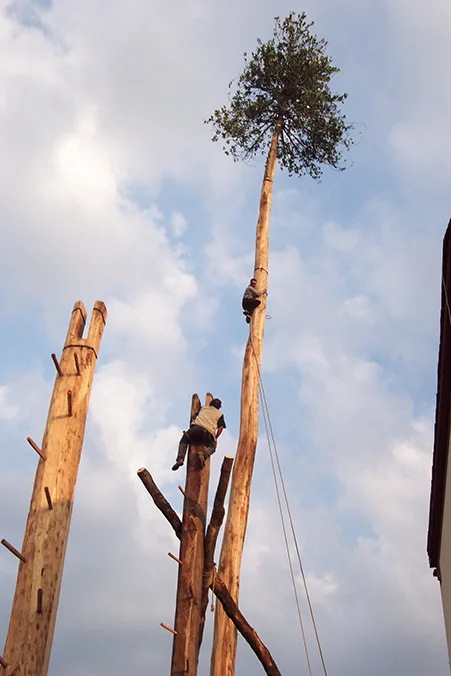
Accettura, a small agricultural village in southern region of Basilicata, transforms for the Maggio di San Giuliano (May of St. Julian), an arboreal ritual with pagan roots that symbolises Earth’s fertility, commonly referred to as “a wedding between trees.” According to experts, the first historical evidence of the custom dates back to the Lombards, a Germanic population that settled in the area around the 7th century.

During the “nuptials,” a male maggio (oak) and a female cima (holly) are joined with the assistance of two groups of residents, the maggiaioli (men who collect the maggio) and the cimaioli (men who collect the cima), to represent fecundity and the union of the town. In the late 18th century, a religious element was added to the ritual through the veneration of San Giuliano, the village’s patron saint, whose statue is paraded through the streets during the ceremony, accompanied by thousands of worshippers, until it reaches the main square, filled with live music.
WHEN: May-June
La Cavalcata Sarda, Sassari, Sardinia
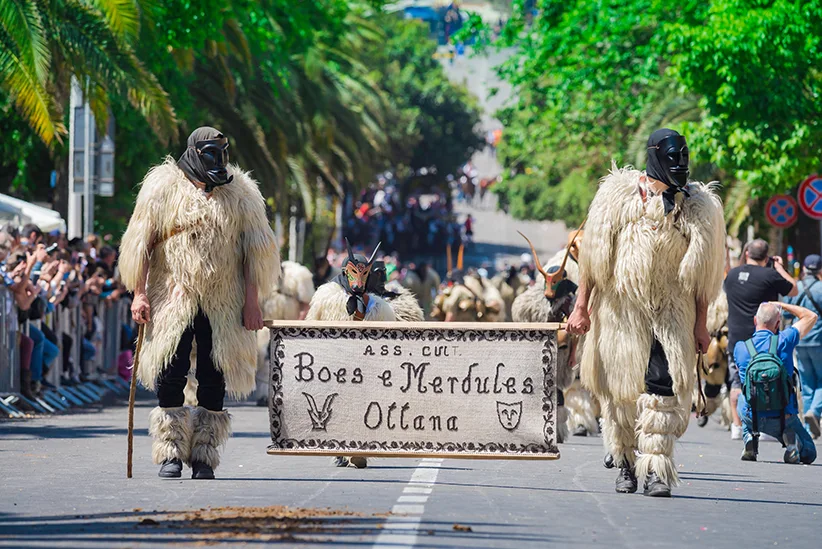
For those keen to witness a non-religious festival, the Cavalcata Sarda (Sardinian Horse Race) is hard to beat. A secular, folkloric event that takes place annually on the second-to-last Sunday of May, the two-day celebration showcases the pride and heritage of Sardinians through the parade of hundreds of individuals dressed in traditional local costumes, as they ride horseback or traditional chariots (traccas) decorated with flowers and everyday items. Participants come from every corner of the island and display rather stunning outfits, which are often adorned with intricate embroidery and jewellery. The origins of the Cavalcata Sarda date all the way back to 1711, when the city council of Sassari held a parade in the name of King Philip V, but its importance is still very much felt today.
WHEN: September 4th